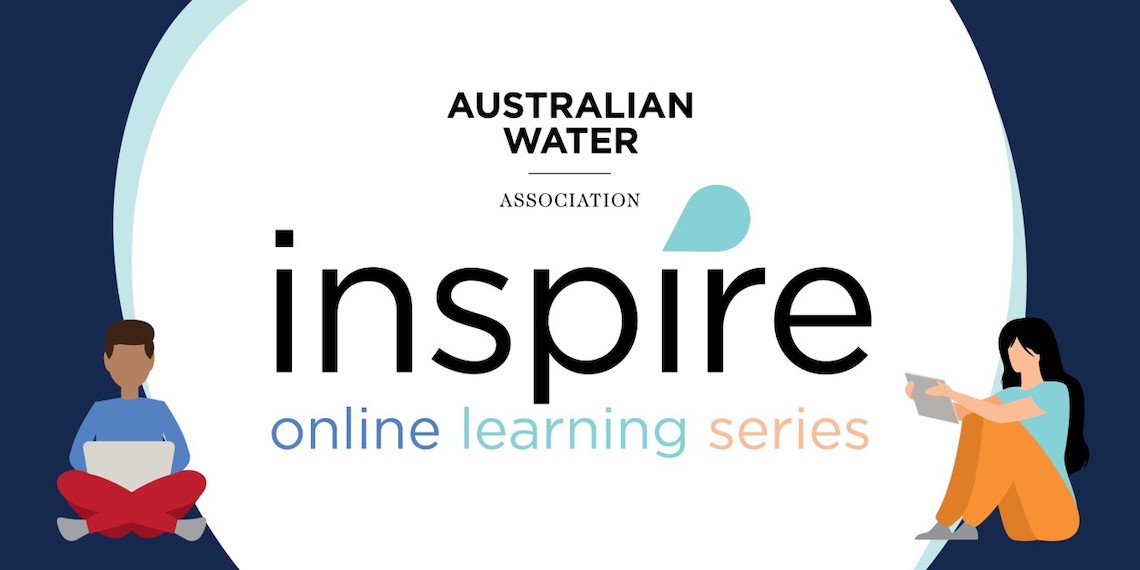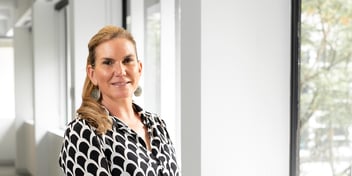Creating a water sector with a lasting commitment to reconciliation

As many water businesses develop Reconciliation Action Plans as a tool for action, the sector continues to learn about what it takes to ensure these commitments are realised and result in genuine and lasting benefits for Aboriginal and Torres Strait Islander peoples.
As part of the Inspire Online Learning Series, AWA recently held a National Reconciliation webinar featuring insights from water sector specialists about their organisations’ reconciliation journeys.
Coming from a variety of backgrounds and places around Australia, the presenters shared personal reflections on reconciliation, as well as some of the challenges and successes that they have experienced in their reconciliation works.
An unfolding process
SUEZ’s Innovate Reconciliation Action Plan (RAP) was fully endorsed by Reconciliation Australia earlier this year, but Sustainability Manager Stephanie Lebeau said it’s important to recognise the process the company is taking towards reconciliation is still unfolding.
“I joined SUEZ a few years ago and was given the opportunity to help develop our first RAP. I had no idea what I was embarking on. For me, the word ‘reconciliation’ was about taking two sets of data, from two different sources, and trying to match the numbers,” she said.
“I soon understood that we were on a journey to reconcile people and cultures, with the outcome being the same opportunities for all. I took the opportunity to attend the national RAP conference in Perth in 2019 and the event was a wakeup call for me.
“I was moved by the emotion in the room and the stories told by Aboriginal and Torres Strait Islander people, and the way they are still treated in the workplace and beyond. Reconciliation is not easy. It's a journey. It took some time to establish what we could do as an organisation.”
Lebeau said SUEZ started by taking stock of where the company was in terms of cultural awareness, before moving to foster strong partnerships with recruitment organisations — such as the Clontaf Foundation and Supply Nation — while also working towards more cultural awareness within the company.
“Two years ago, we had very poor knowledge about Aboriginal culture. We had very limited insight in terms of where we were in terms of Aboriginal representation within our workforce. We launched an awareness model to encourage our people to learn more about Aboriginal cultures,” she said.
“We realised we were working with Aboriginal businesses within our supply chain. We had an initial partnership with Clontarf Foundation to increase our Aboriginal workforce.
“In terms of where we are now with employment, we have expanded our collaboration with Clontaf. We now know where we stand in terms of workforce identity and we are sitting just under 2% of Aboriginal representation in our workforce across Australia.”
Ideas and innovation
Sydney Water has also been working toward developing its Innovate RAP, launched in July 2021, which was developed in conjunction with representatives within the organisation, Head of Diversity and Inclusion Ros Reidy said.
“Following workshops with representatives from across our organisation, we had ideation sessions to work through our vision for reconciliation. We also worked through what the commitments would be and where the ownership of those actions should sit within the organisation,” she said.
“We see the RAP providing a roadmap for the activities that we will undertake over the next two years through to July 2023 to deliver positive outcomes that are going to benefit Aboriginal and Torres Strait Islander peoples.
“We have a reconciliation committee that supports the implementation of our commitments; it has representatives from across the organisation. And to help us and guide us in terms of those actions, we appointed an Aboriginal co-chair Natalie Wilcock to the committee last year.”
Sydney Water Indigenous Inclusion Specialist Veronica Murphy said it is crucial for any water organisation embarking on the journey towards reconciliation to be aware of the personal responsibilities of their Indigenous employees.
“When Aboriginal people are doing this work, we are not just representing the organisation, we are also representing the communities that we live in and are associated with. We have a sense of responsibility and accountability for the work that we do within those communities,” she said.
“We carry a cultural load. We take on that responsibility and our community keeps us accountable for the things we may talk about in our role as employees and the RAP.
“It is so important to be mindful of this when engaging with communities and particularly when putting your Aboriginal employees out front and centre. They are taking on that responsibility and we feel that personally.”
Agreeing with Lebeau, Murphy said the reconciliation journey can be very difficult, but within those difficulties is an opportunity to foster the respect and trust required to move forward.
“It’s been a bit daunting for some of our non-Aboriginal colleagues engaging in community consultations. They’ve had to listen to some hard truths, particularly when there has been negative interaction in the past between Sydney Water and Indigenous landholders,” she said.
“Some lessons were learnt around language and the use of terminology. I am quite proud of my colleagues who have taken that on board. Those hard truths must be acknowledged, these learnings are needed to build trust and commitment.”
Murphy said that Sydney Water has a varied level of understanding in terms of Indigenous cultures across the company, and so the approach to cultural awareness training has been tailored to meet all levels.
“We have people with little to no knowledge about Aboriginal knowledge and history, to people who have worked with Aboriginal communities and are quite knowledgeable. We are taking a blended approach to how we deliver cultural competency and awareness training,” she said.
“We have a number of offerings we are rolling out to employees, including foundational training, toolbox talks, primarily for operations workers on Country, and also facilitator-led training, based on the needs of particular teams.”
Murphy said Aboriginal representation at Sydney Water has been low for a number of years, but that the utility now has an aspirational target of 3% over the next 5 years.
“To achieve this we have put in place a number of strategies, including nurturing relationships with recruitment agencies, and we are starting to see some results. In the last four months, we have been able to recruit two Aboriginal employees, which has been great,” she said.
“Employment has been a challenge and one we are keen to address. One of the things we are reinforcing across the organisation is that it's going to take time, we are not going to see the change occur overnight.
“But we also need to build the awareness and the competency of the organisation and ensure we have a culturally safe space that Aboriginal and Torres Strait Islalnder employees want to join.”
Tailoring program needs
Facing similar cultural awareness challenges, Water Corporation has recently moved to take cultural competency a step further with the development of a tailored water learning program, which was developed by Aboriginal Engagement Senior Adviser Jordin Payne.
Payne said she identified an urgent need for the program, which focused on filling the gaps in workforce knowledge around Aboriginal water expertise and insights.
“Water Corporation had never done any kind of responsive, regional cultural water training. We do awareness training, which is more of a historical conversation. But we didn’t have anything that responded to the gaps in our current workforce knowledge,” she said.
“The program is all about two-way learning. We didn't want to create another situation where we were going to an Aboriginal group to be taught something. That’s all about taking. We wanted to look at how we could give back as well, via opportunities to share expertise.
“The aim was to listen to the rich perspectives of our cultural lore bosses. We wanted to share how we access, monitor and share water resources across the district, and build trust and respect, positioning Aboriginal knowledge as a huge strength in this work.
“Our goal was to empower our teams with a deeper understanding and respect of Aboriginal ways of knowing. We wanted them to look at what we call ‘knowing water’ and the holistic health indicators that go beyond cultural awareness to what we call ‘tailored water learning’.”
Payne said an important part of the program was about allowing Aboriginal knowledge holders to lead, and having honest, open conversations about intentions.
“We saw incredible, tangible differences within our teams in terms of the relationships they forged with Country managers. There was a genuine building of trust,” she said.
“We also found that our senior managers involved walked away with learnings about local water indicators, something they were surprised they didn't know. Even those that have been in the industry for decades learned something new.”
Building trust and connection is what reconciliation is all about, and so taking account of where the organisation and its people are starting from is crucial to moving forward in fostering genuine sharing and understanding, Payne said.
“A large part of why I do this work, why I created this program for reconciliation, is because of who I am. I’m a Nimanburr woman. We have found that many Australians know very little about the reasons for current disparities and the impact of injustices that occur for Aboriginal and First Nations people,” she said.
“It takes a lot of internal reflection before you begin a journey. If you haven't already, take the time to look internally at the organisation to understand where you are starting from.
“Whenever we start on this journey, it is really important to acknowledge that Aboriginal knowledge is not ours alone. It belongs to our family, to our ancestors, it belongs to the land, and we are entrusted with the survival of not just our people, but also our culture.”



